Mae has a red backpack that I ordered shortly before she started school. Her two brothers have similar backpacks, also in bright colors, each embroidered with their initials. I love the sight of my children’s backpacks hanging together on the hooks by our back door. It makes me feel that things are in order.
What you can’t see when you look at their backpacks is how differently they experience school. My sons, who are in elementary and middle school, are on a largely regular trajectory. Mae, however, is autistic; she is almost completely nonverbal and, at the age of nine, still in diapers. Five years after Mae entered a classroom for the first time, school is a vital but incomplete experience.
The current system of special education is based on a noble American commitment: In 1975, Congress passed the Individuals with Disabilities Education Act. It guarantees a “free, appropriate public education” for all children — a standard known in special-ed circles as “FAPE.” But the system created 42 years ago isn’t ready for student needs today. The diagnostic criteria have since expanded to include a wider spectrum. This year, according to the Centers for Disease Control, one in sixty-eight children will be diagnosed with autism of varying degrees, many before they enter school. (In 1975, it was one in ten thousand.) Educators are now scrambling to patch together services for a group of students increasing in size and complexity. Meanwhile, many parents like me feel that their children are not being taught the skills they need to one day live independently, and then are too quickly thrown — unprepared — into adulthood.
This starts early on in an autistic child’s education. The current model of special education revolves around an annual exercise known as the Individualized Education Plan. An IEP sets out goals and expectations for a child in the year ahead and is composed by teachers, therapists (speech, occupational and physical), administrators, a psychologist and, sometimes, the school nurse. In Mae’s case, every potential skill that she could develop in the year ahead is broken into its most basic parts: cutting with scissors, sitting still, matching a set of plastic bears by color.
In theory, by following the blueprint, we can quantify and track Mae’s progress and assure that one year builds on the next. In reality, the exercise has become a hollow pageant.
Mae’s IEP should be one page, with a single goal: Mae will learn to communicate. As long as my daughter doesn’t speak, using scissors and identifying colors are not the things keeping her from the rest of the world. The better she can become at communicating her own needs, the less support she will need as an adult from society. Mae needs life skills before all else.
It took time for me to realize this. When Mae was five, I toured a private special-needs school in Connecticut. On the second floor, there was a mock grocery store with some children practicing shopping and others acting as employees. They were older than Mae — late teens, early twenties. Across the hall, in a mock clothing store, students were learning how to place a plastic label on a hanger to mark the size. Some had headphones on to soothe them; some were making the low growling noises not uncommon among autistic kids.
At the time, I wasn’t ready for that scene. I still hoped that, with the right combination of therapies, specialists, herbs (and sleepless nights for her parents), we would cure Mae. I couldn’t leave the school fast enough.
Read More >


